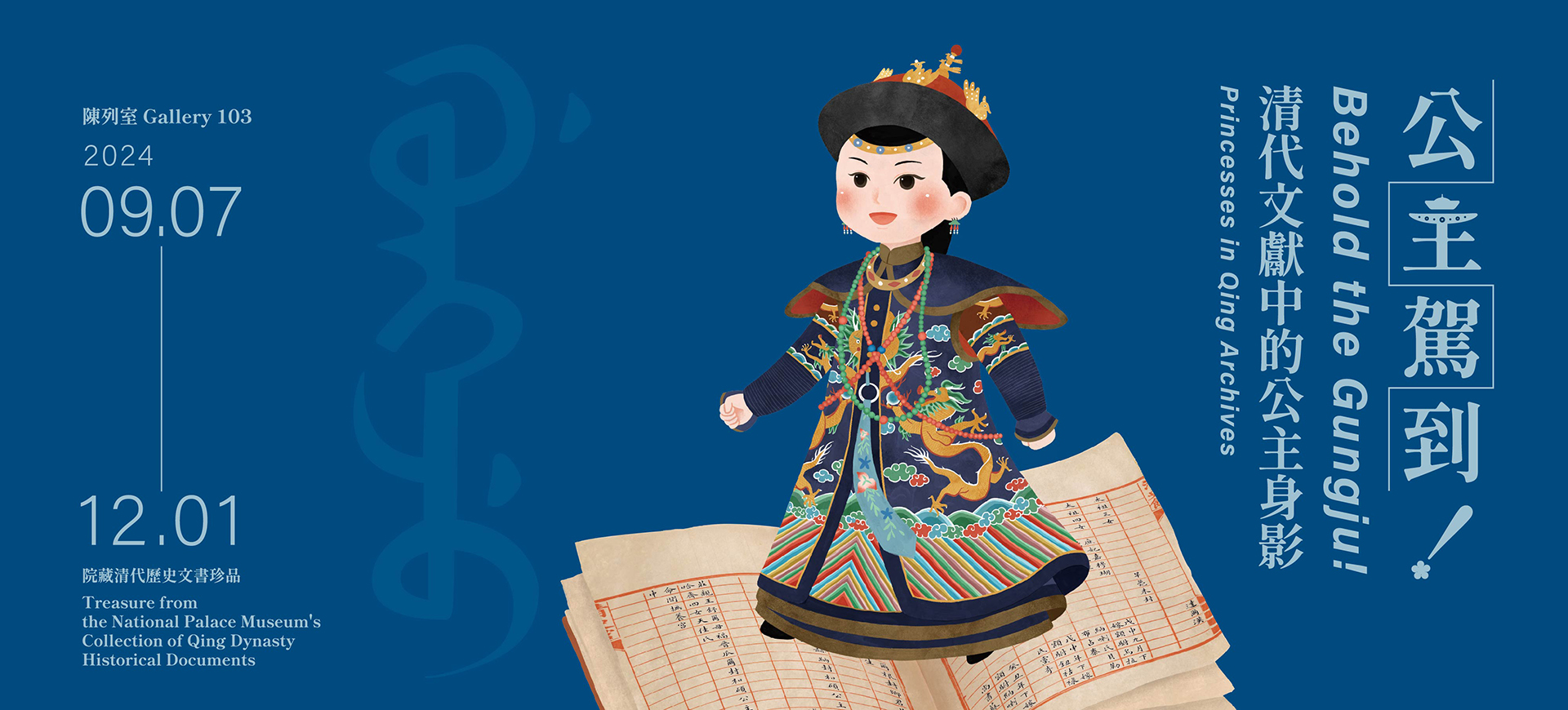The Emperor's Daughters
The Chinese term gongzhu (“princess”) dates back to at least the Warring States period (5th–3rd centuries BCE). Initially referring to daughters of rulers or feudal lords, it later became exclusive to imperial daughters. The Chinese-character term spread across East Asian cultures, including China, Korea, and Vietnam.
From the late 16th to early 20th century, a select group of women attained extraordinary status as daughters of emperors. This section of the exhibition delves into the lives of these princesses, exploring their unique experiences growing up and in daily life. We examine how these women embarked on and navigated their roles as princesses within the imperial system.
-
Registry of Princesses
Compiled by the Qing State Historiography Institute
Qing State Historiography Institute Draft, early 20th century
故史006345This is one of the manuscripts of the Draft History of Qing in the NPM collection and records the information on 95 Qing dynasty princesses. The table features eight columns, including a “name” column that notes the princesses’ personal names or aliases. However, only the names of the first eight princesses of Hong Taiji can be found in said column; for the others, this column is left blank, making it the column with the least amount of information.
Originally, Manchu women had their own names. However, after becoming a part of the Chinese nobility, their names were less emphasized, likely influenced by Chinese traditions. Consequently, unlike the princes, the princesses’ names were rarely mentioned in the literature; they were typically referred to only by their birth order, such as “the emperor’s nth daughter” and “the nth princess,” or titles bestowed by the empire, reflecting their roles tied to the empire’s diplomatic relations.
-
Record of Betrothal Gifts from Princess Atu's Consort (1641)
From Veritable Records of the Great Qing Emperor Wen, Taizong
Compiled by Chen Mingxia et al. (first compilation, 1655); Ortai et al. (revised compilation, 1740)
Small red silk–bound Chinese-script edition (first compilation); Small red silk-bound Chinese-script edition (revised compilation)
故官001680、故官001633Atu, the fifth daughter of Hong Taiji, is most commonly referred to as “Princess Shuhui of the First Rank.” The original version of Veritable Records of the Great Qing Emperor Wen, Taizong notes that before Atu’s marriage in 1641, her betrothed, Suo’erha, presented a betrothal gift, resulting in a rare mention of her real name in the document. However, in the revised version of the aforementioned factual records made in the Qianlong period, Atu’s name was removed and replaced with “the fifth daughter, princess of the first rank.”
The original version, based on early Manchu documents, retained many Manchu women’s names including Atu’s. After the Manchus took over China, emphasis on women’s original names diminished, and Atu’s name was deliberately changed. These two versions of Veritable Records reflect the shift in Manchu culture and the changing statuses of women.
-
Golden Basin
Commissioned by Imperial Consort Quan of the Niohuru clan
1831
故雜001933This basin was made at the order of Imperial Consort Quan of the Niohuru clan (mother of Emperor Xianfeng and later Empress Xiaoquancheng) in 1831. Emperor Xianfeng stated that he had used this basin after his birth in 1831. After the empress passed away in 1840, Emperor Daoguang decreed the possible use of this basin for the rituals for new male and female imperial offspring, on the conditions that the superintendent of the Inner Hall requested an edict and that the edict was approved. Whether any princess actually used this basin remains unknown. Nevertheless, what is certain is that all imperial female babies were welcomed into the world amid blessings and praises, receiving their first rites in such a golden basin and marking the beginning of their imperial lives.
-
Neize Yanyi (Rules for the Inner Quarters and Their Meanings)
Written by Fu Yijian et al.
Court printed edition, 1656
故殿018261Princesses, growing up in the imperial court, presumably received education during their schooling years. However, unlike princes, who had a well-documented education system, there are very few records of when, where, and how princesses received their education. Neize Yanyi contains a collection of princess tales, the readers of whom are surmised to include princesses, providing some indirect clues about their education.
As members of the imperial family, princesses were destined for roles in dynastic marriages. The content of the Neize Yanyi reveals that princesses’ duties to service the empire may be something that shaped the court’s educational standards and hopes for them.
-
Seating Arrangements for Princess's Wedding Banquet in Baohe Hall
From Imperially Statutes of the Great Qing with Illustrations
Compiled by Tojin et al.
Wuying Palace printed edition, 1813
故殿012959、012960This artifact has the seating chart of a princess’ wedding banquet, held at the Baohe Hall in the Forbidden City. The emperor sits on the central “throne” within the hall, flanked by four rows of seats on both the east and west sides. Princes and dukes occupy the east side, while the imperial guards, internal ministers, and the groom’s family are seated on the west side.
Although the event is titled “princess’ wedding,” it is predominantly a male-dominated occasion for the emperor to hold a banquet for the groom and groom’s male clansmen; the princess herself does not appear. However, the orderly seating as well as the ceremonial rites and music slowly set the stage for the princess’s marriage mission.


